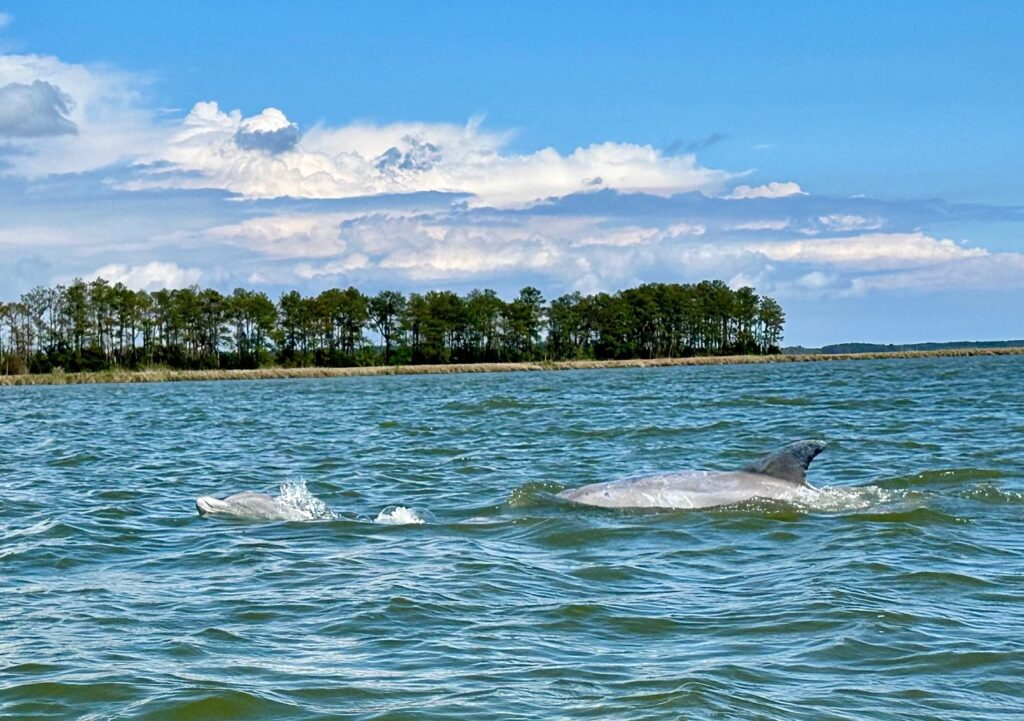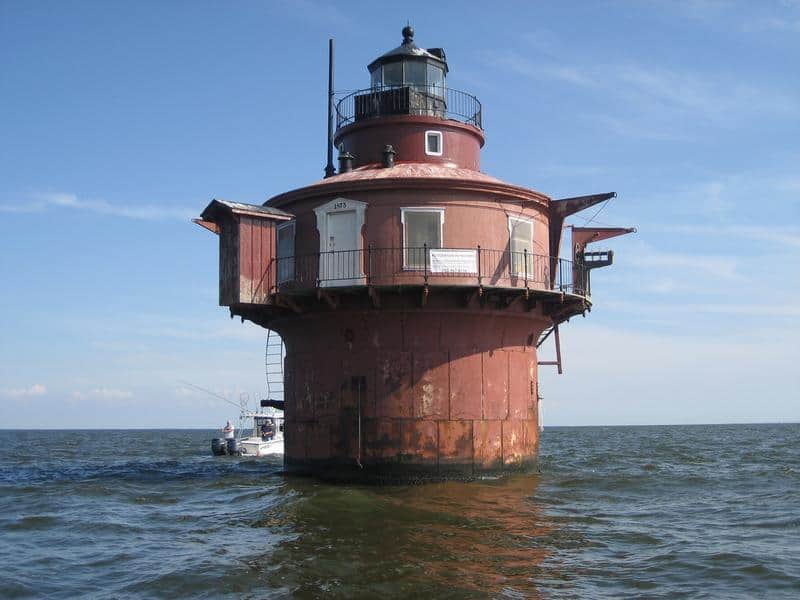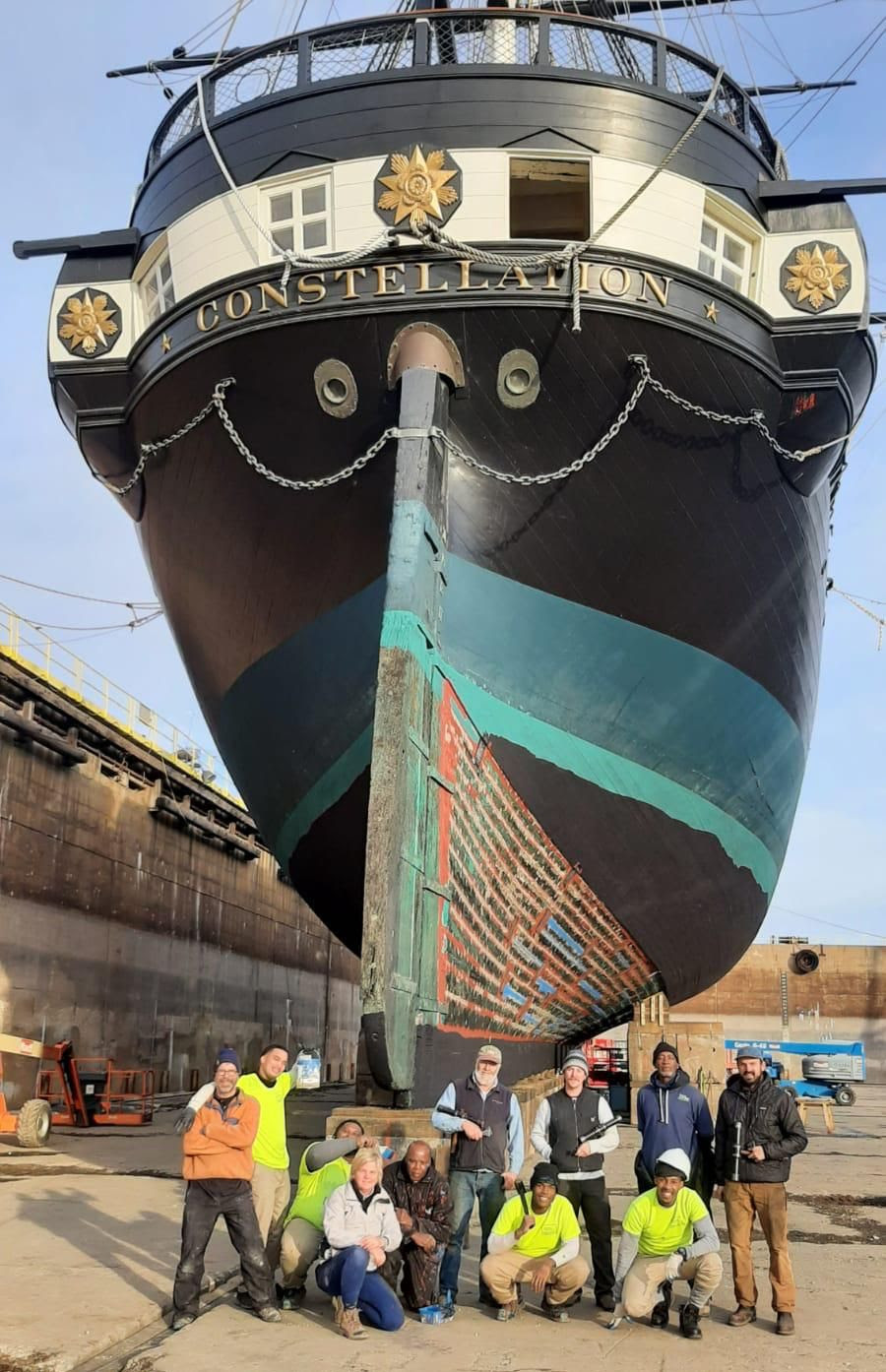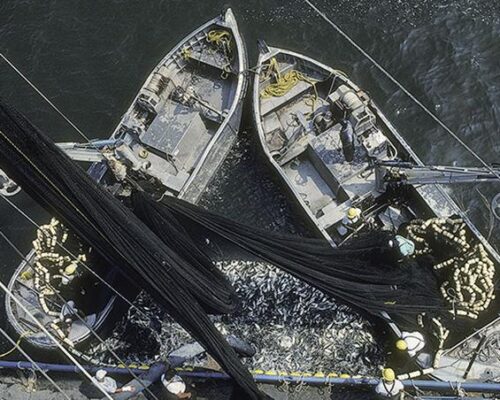You can learn a lot about dolphins by listening.
That’s what researchers from the University of Maryland have gathered over the past several years as studies driven by proposed wind energy projects have led to a much broader understanding of Atlantic bottlenose dolphins that frequent the Chesapeake Bay.
The hundreds of dolphins that come to the Bay and its rivers every summer will, in the coming years, likely encounter more and more offshore wind farms as they make their way up the Atlantic Coast. Scientists have been using underwater recording devices called hydrophones to monitor the comings and goings of marine mammals, so that offshore wind projects can schedule construction periods outside of their peak traveling seasons. The monitoring will also help them understand how the presence of turbines affects the animals over time.
But by having hydrophones in the water, continuously monitoring species for months on end, scientists have made other discoveries.
Under a project called TailWinds, a team has been monitoring the presence of marine mammals off Ocean City, Maryland, for about a year. The project is funded by U.S. Wind, Inc., which is developing a lease area for as many as 22 wind turbines in these deeper offshore waters.
Using hydrophones there and elsewhere, researchers have identified about 1,500 “signature whistles” belonging to individual dolphins. Scientists say these specific whistles are developed in the first year of a dolphin’s life as the mother calls to her nursing calf and the calf recognizes that call as a sort of name.
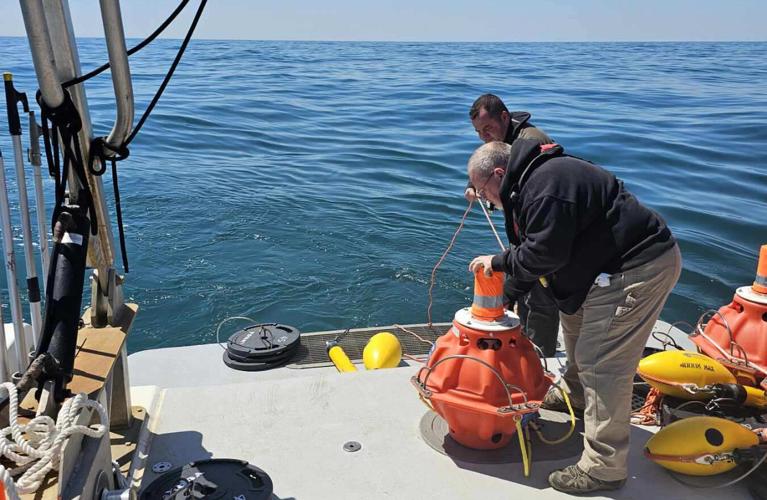
“We were surprised by how many we detected off Ocean City that are also in the Chesapeake Bay,” said Helen Bailey, an adjunct professor at the University of Maryland Center for Environmental Science.
Bailey is the founder of the Chesapeake DolphinWatch program, which was inspired in part by the hydrophone work, but also by the desire to better understand where and when dolphins are traveling in the Bay. Begun in 2017, the citizen science project employs a smartphone app that the public can use to report dolphin sightings. The number of sightings has grown by hundreds each year, with more than 1,500 reported to the app in 2023.
“It’s interesting because I thought at some point it would just plateau. But it keeps growing,” she said. “I think it’s reflecting a continued growth of the network [of citizen scientists] and the use of the Bay by bottlenose dolphins.”
Bailey has also been working with TailWinds, which has collected a year of baseline data so far, with a focus on black sea bass as well as whales, porpoises and dolphins.
Before this, Bailey monitored marine mammals off the pier at the Chesapeake Biological Laboratory on Maryland’s Patuxent River in 2017. That’s when she began to see just how many dolphins are coming into the Bay.
Since then, Bailey and her team have used specialized software to sift through hours of hydrophone recordings to look for patterns that identify certain individuals. Taken together, the work has confirmed that the Atlantic bottlenose dolphins that visit the Bay are traveling from as far south as North Carolina and as far north as Delaware and New Jersey.
Researchers working within the Bay, such as the Potomac-Chesapeake Dolphin Project, have confirmed through their own observations and hydrophone recordings that dolphins use the Bay for mating, giving birth and feeding, and that they travel farther up into tributaries than previously understood.
Because the dolphins are so widely traveled, what happens off the coast — including new energy projects — could affect their behavior.
Decades ago, Bailey began studying how loud noises, such as the pile-driving construction that is involved in anchoring wind turbines to the seabed, affect the behavior and health of marine mammals. As a doctoral student, she conducted research for a new wind farm off Scotland’s coast that focused on harbor porpoises.
“Generally, we found that there was a period where the animals might be found farther from the turbines to avoid [the noise], but then they come back afterward,” Bailey said.
There is evidence that, after construction, the wind turbines’ underwater structures actually attract dolphins and other marine mammals—because their underwater structures become artificial reefs that attract the fish they feed on.
But underwater pile driving is one of the loudest activities humans can do in marine environments, second only to seismic surveys conducted during oil and gas explorations in some areas, Bailey said. In Scotland, they found the pile-driving sounds could be heard about a kilometer away in the air, and even farther in the water (about 70 kilometers, or 43 miles).
Because water molecules can carry sound farther, one method that dampens underwater noise during wind turbine construction is the use of perforated air hoses that create a curtain of bubbles around the structures. The extra air helps reduce the amount of noise that escapes the immediate area.
Excess underwater noise can also have a cumulative impact on the animals. Bailey published a paper last year that found excess noise makes it hard for dolphins to communicate, causing them to raise the volume of their calls much like humans might do in a noisy restaurant.
“These animals are already dealing with almost constant vessel noise,” Bailey said. “In the last 100 or so years, their soundscape has completely changed. They do adapt their calls.”
This story first appeared at bayjournal.com on July 3, 2024.

